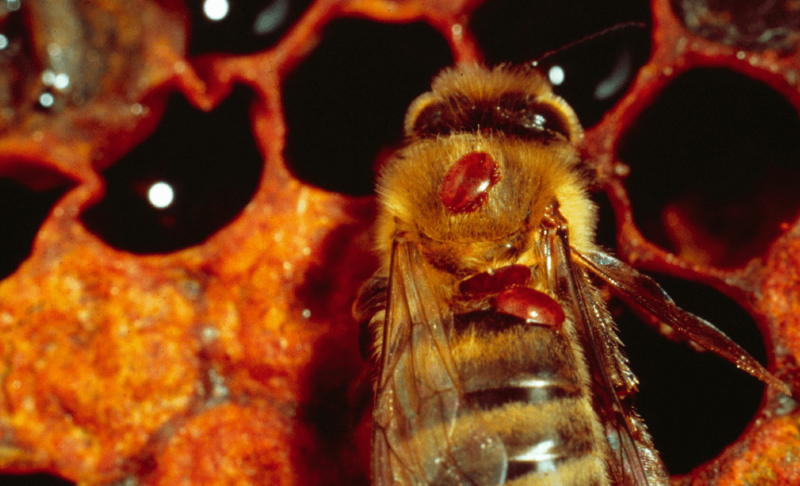The association between the deformed wing virus and the parasitic mite Varroa destructor has been identified as a major cause of worldwide honeybee colony losses. The mite acts as a vector of the viral pathogen and can trigger its replication in infected bees. However, the mechanistic details underlying this tripartite interaction are still poorly defined, and, particularly, the causes of viral proliferation in mite-infested bees.
Here, we develop and test a novel hypothesis that mite feeding destabilizes viral immune control through the removal of both virus and immune effectors, triggering uncontrolled viral replication. Our hypothesis is grounded on the predator–prey theory developed by Volterra, which predicts prey proliferation when both predators and preys are constantly removed from the system.
Consistent with this hypothesis, we show that the experimental removal of increasing volumes of haemolymph from individual bees results in increasing viral densities. By contrast, we do not find consistent support for alternative proposed mechanisms of viral expansion via mite immune suppression or within-host viral evolution.
Our results suggest that haemolymph removal plays an important role in the enhanced pathogen virulence observed in the presence of feeding Varroa mites. Overall, these results provide a new model for the mechanisms driving pathogen–parasite interactions in bees, which ultimately underpin honeybee health decline and colony losses.
…
In general, our conceptual hypothesis represents the most parsimonious interpretation of the mite role in the enhanced virulence of the virus and provides the logical framework for future experiments aiming to unravel the intimate molecular mechanisms involved.
…
In systems, such as the honeybee–Varroa mites interaction where the parasite removes a substantial amount of blood from the host, this model could probably play a significant role. Thus, these results lay the groundwork for future research into the role of these predator–prey dynamics in other systems, and studies of the underlying molecular and physiological mechanisms.
Read full, original article: Haemolymph removal by Varroa mite destabilizes the dynamical interaction between immune effectors and virus in bees, as predicted by Volterra’s model































